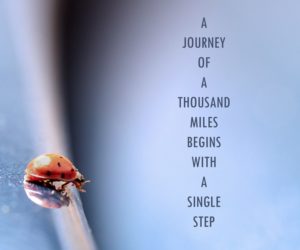 “Life happens.” Many time I heard Dr. Harapnuik said this phrase during his weekly conferences. Unfortunately, during this last year, several tragic events affected me and my family. Some courses I had to dropped them, and other courses I had to postponed them. Sometimes, Life forces us to close circles, to relocate, to live in another city, to look for a new job, to start all over again. Many questions arise. Should I continue teaching? Should I switch careers? Should I quit my studies? Now, I am teaching new subjects and another grade level. Should I modify my innovation project to make it fit my new reality? Or should I create a new project? So many disjunctives to be considered. So much time and effort I have dedicated to creating an Eportfolio and an innovation project, and yet it does not seem to fit my new challenge as a teacher. Due to these and many other questions, I concluded that my innovation project must be modified or completely changed it, not only to fit my present needs but also to serve as an arrowhead to other teachers who want to implement a self-sustaining Blended Bilingual Program. The innovation project should be organic, minimalist, and cyclical. Although the Blended Bilingual Program is in full restructuring, such restructuring is based on the Innovation Project Outline
“Life happens.” Many time I heard Dr. Harapnuik said this phrase during his weekly conferences. Unfortunately, during this last year, several tragic events affected me and my family. Some courses I had to dropped them, and other courses I had to postponed them. Sometimes, Life forces us to close circles, to relocate, to live in another city, to look for a new job, to start all over again. Many questions arise. Should I continue teaching? Should I switch careers? Should I quit my studies? Now, I am teaching new subjects and another grade level. Should I modify my innovation project to make it fit my new reality? Or should I create a new project? So many disjunctives to be considered. So much time and effort I have dedicated to creating an Eportfolio and an innovation project, and yet it does not seem to fit my new challenge as a teacher. Due to these and many other questions, I concluded that my innovation project must be modified or completely changed it, not only to fit my present needs but also to serve as an arrowhead to other teachers who want to implement a self-sustaining Blended Bilingual Program. The innovation project should be organic, minimalist, and cyclical. Although the Blended Bilingual Program is in full restructuring, such restructuring is based on the Innovation Project Outline
Innovation Project Outline (MODIFIED)
Even though I am a lone wolf, “No Man is an Island” as John Donne said. I will need plenty of help to make this project works. Therefore, bringing together a team of educators committed to the project is paramount. Likewise, it is predominant the professional learning development of them. A small and open-minded group with a strong collaborative sense is required because research shows that when teachers work together in study find it significant and rewarding. Results in the classroom clearly improved. Also, the study and discussion groups of teachers contribute relevant support and supplemented intensity to professional collaboration (Beatty, 2000). According to Fuller (2001), “the area of greatest struggle is not in learning a new skill but in implementing it” (Gulamhussein, 2013. p. 10). Therefore, a well-trained community of educators will only be possible through an effective PL program. All the help we can receive is welcome. That is why we make a call for action to all stakeholders who care about the welfare of Blanton Elementary School community.
The team’s PL will be ruled by the COVA Model parameters and the 5 key principle of effective PL:
The Journey
Even though my actual audience is my colleagues and the Blanton Elementary School community in general, the Big Hairy Audacious Goal (BHAG) is that both the Blended Bilingual Program and the PL Training Program can be used either together or independently according to the needs of an individual or an institution.
The PL Program
The main idea of the PL program is to train educators to use technology in a Blanding Learning environment, but the BHAG is to foster a growth mindset that allows creating a flexible culture that embraces risk-taking as an inherent part of it. This culture should extend to all members of the school community, especially to the students because it is from them that will emanate the new guidelines that will make this an organic program.
Hands-on Training
The PL training will be focused on encouraging educators to implement the Blended Learning – Station Rotation Model, the Flipped Classroom, and the technologies and pedagogies that support its implementation.
References
Andrews, B. (2015, Nov. 16) 5 principles for effective professional development. Video File. Retrieved from https://www.youtube.com/watch?v=K-WOy4aqgvs
Beatty, B. R. (2000). Teachers leading their own professional growth: Self-directed reflection and collaboration and changes in perception of self and work in secondary school teachers. Journal of In-Service Education, 26(1), 73–97. http://doi.org/10.1080/13674580000200102
EdCan Network Le Réseau ÉdCan. (2016) Innovation that sticks case study – OCSB: Risk taking. Video File. Retrieved from https://www.youtube.com/watch?v=UAMcjUzdVnE
Gulamhussein, A. (2013). Teaching the teachers effective professional development in an era of high stakes accountability. Center for Public Education. PDF File. Retrieved from http://www.centerforpubliceducation.org/Main-Menu/Staffingstudents/Teaching-the-Teachers-Effective-Professional-Development-in-an-Era-of-High-Stakes-Accountability/Teaching-the-Teachers-Full-Report.pdf
Harapnuik, D. (2013, Nov. 4). What is a flipped classroom? Retrieved from http://www.harapnuik.org/?s=flipped+classroom
Hunter, S. (2015, May 14). 5 Principles of Effective Professional Development. Retrieve from
http://blog.vingapp.com/corporate/5-principles-of-effective-professional-development/

